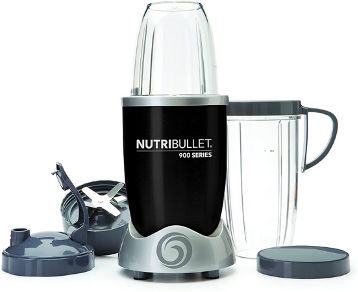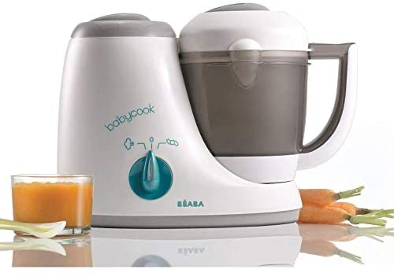Getting Started With Homemade Baby Food : Baby’s First Foods
Getting Started with Homemade Baby Food : Baby’s First Foods
By Holly Grattan
With so many baby food options on the market, it’s easy and convenient to simply pop a few jars or pouches in your weekly shop, but do the advantages really outweigh the benefits of making it yourself? When my first child was born and he was ready to start solids, I remember wanting to give him natural food options and I bought The Baby-Led Weaning Recipe Book by Annabel Karmel.
I followed her guidance and found it to be really useful. I started by offering savoury steamed and blended vegetables, introducing them one at a time. I also offered carrot and cucumber sticks which also doubled as great, natural teethers. I later introduced fruits in the same way.
Important note: don’t leave your baby unattended whilst eating or teething on vegetable sticks as they can be a choking hazard.
I remember right at the beginning buying some jars and pouches as a standby for those times as a parent you or your child is just too tired to wait. Upon opening the first jar, I was immediately put off by the smell. After trying it myself, I decided to throw it away and not feed it to my son. I think this was a really good lesson I learnt as a first-time parent, if I didn’t like it and wouldn’t eat it myself there was no way I would be giving it to my child. The pouches though – and I am specifically referring to the Ella’s Kitchen brand - I absolutely adored! Ella’s Kitchen contains no nasties and the pouches were so convenient for travelling, parks, beaches, and they allowed my child to easily, and with very little mess, feed himself once he got the hang of it, even from a very young age. I definitely felt they were worth the money even though the cost of pouches adds up quite quickly compared to home-made baby food which is a very low-cost way to feed a baby.
**TOP TIP** Bananas have to be the easiest food to feed a baby. I would simply grab a banana and pop a teaspoon in my bag. When my baby was hungry, I would simply unpeel and use the spoon to gently scrape and mush the banana into a sticky, gloopy consistency with no bits and simply feed it to them. No packaging & no bowl required. I did that a lot!
Here are some more great tips to get you started and whipping up your own home-made blends:
Invest in a quality blender. Mashing and stirring certain foods like banana, roasted squash & avocado is an easy start but a blender like a Nutribullet is a whiz at baby food prep saving you time and ensuring the consistency of the purées are suitable for babies new to solids. Check out this blender by Beaba , it is specially designed for making baby food!
Choose seasonal and local produce. Fresh, local, and even organic foods are full of nutrient-rich goodness which is perfect for babies. Where possible, buy from local farmers markets. Here are some local farms offering organic fruit and vegetable baskets.To avoid waste you can also use pre-frozen veggies to create your baby blends and can even choose to batch cook and store your fresh baby foods in the freezer. I used an ice-cube tray to freeze baby purées and once frozen stored them in airtight Ziplock bags. When my baby was hungry, I simply took out a few cubes of purée and in a microwave safe bowl heated (and cooled) it to have ready for the next meal. According to Annabel Karmel you can keep frozen baby foods in the freezer for up to 3 months.
Important note: Remember to check the temperature of all baby food by testing it on your wrist before feeding it to your baby.
Mixing things up
Babies develop a taste for whatever you give them, so once you have introduced all the individual veggies and fruits, get creative with blends like spinach and avocado or sweet potato, beetroot and green beans. Steaming is a fantastic way to keep in as many nutrients as possible but boiling and microwaving are also suitable ways to cook the produce before blending. If your purées are a bit thick you can add boiled water until they are smooth and the right consistency.
Making baby foods can be a lot of fun, as can watching your baby react to new flavours they have never tried before. It is perfectly normal for your baby to spit out new tastes as they get used to them. Don’t be disappointed if they won’t eat everything you prepare the first time, especially strong flavours. They say that your baby might need to try a new flavour up to 8 times before they get used to it. Be persistent, babies who are exposed to a large variety of foods at a young age tend to be less fussy eaters as toddlers and beyond.
Author: Holly Grattan





